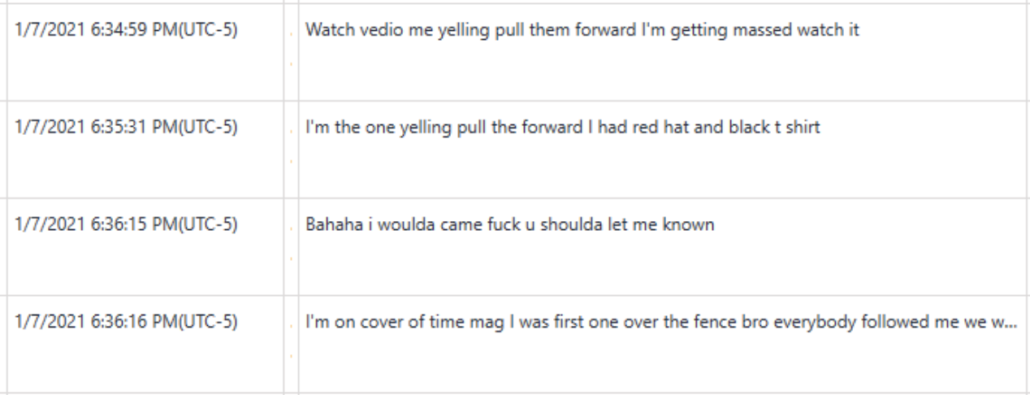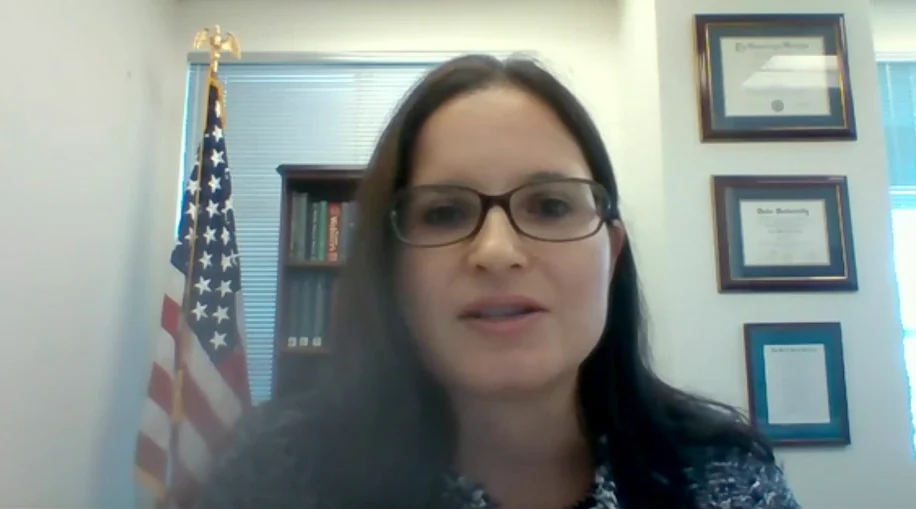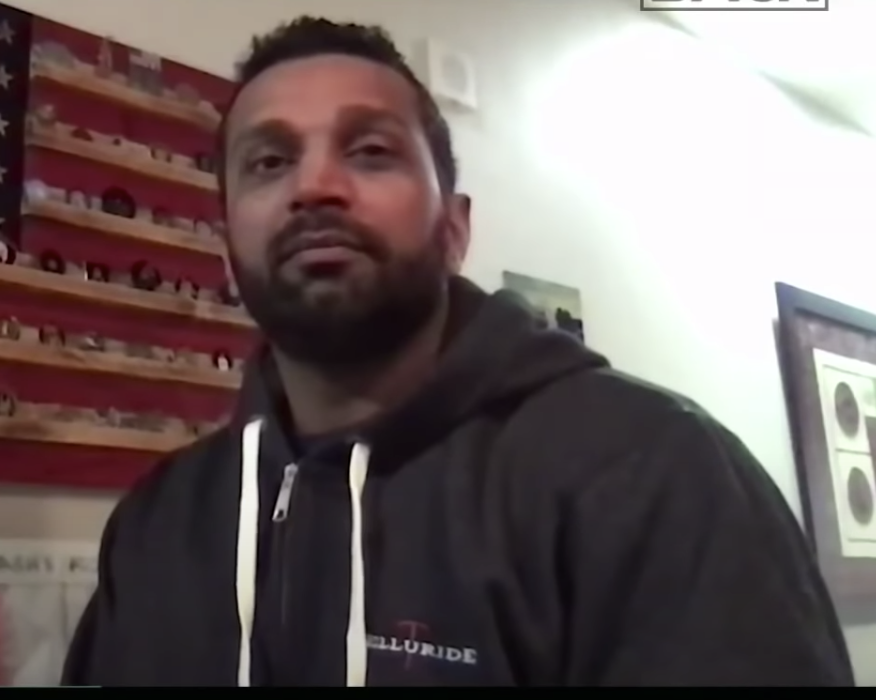In a filing submitted Thursday, the government disclosed something remarkable. January 6 defendant Ryan Samsel, who was brutally assaulted in the DC jail — allegedly by guards — said in September he wanted to be moved back to the DC jail.
On or around September 28, defense counsel sent a request to USMS that Samsel be transferred back to the D.C. Jail instead of Northern Neck, indicating that he wanted to go back there and was comfortable doing so.
The disclosure comes in response to a series of filings alleging additional mistreatment from Samsel’s latest attorneys, Stanley Woodward, who is a legit defense attorney, and Julia Haller, one of the attorneys sanctioned for making bogus claims of vote fraud in Michigan.
Samsel’s various claims of abuse
In Samsel’s first filing, submitted on September 11, his attorneys claimed that he was still not receiving all the required care for injuries suffered in the March 21 assault in DC jail or pre-existing conditions exacerbated by the assault.
A status report submitted on September 20 in response to an order from Judge Tim Kelly claimed that on September 15, as Samsel was being moved from a common area back to his cell, he was “dropped,” causing redness on his cheek.
Late that evening, officers came to Mr. Samsel’s cell to move him back to solitary confinement. According to records provided by the U.S. Marshals Service (“USMS”), Mr. Samsel reported that he was “dropped while being removed” from his cell. The medical records further provide that after receiving medical attention in solitary confinement, Mr. Samsel had “mild redness on the left side of his face at the cheek bone area.”
Samsel’s filing also suggests that the records from the March 21 assault in the DC jail might be incomplete.
A government status report submitted the same day noted that, “a review of the medical records are not entirely consistent with that Status Report or the Defendant’s assertions” (and provided several examples). It further noted that Samsel was seeking, “materials that are plainly not medical records, such as ‘incident reports’, administrative records, photographs, and video recording from inside the facility (none of which are compiled or authored by medical personnel).” It then noted that abuse in jail, “is appropriately brought in a civil proceeding and not through the criminal process.” (Note, that is legally true but factually, usually useless, but it gives prosecutors a way to move questions about conditions of confinement out of a criminal docket to one under a different judge.)
But Samsel’s attorneys didn’t file a civil suit. Instead, they kept filing motions.
Another filing, submitted on October 4, ostensibly an update on the status of medical reports which did indeed claim that defense attorneys haven’t received all Samsel’s medical records yet, also described that after the prior incident, Samsel was held in solitary confinement to coerce him to admit he did not get a concussion after allegedly being dropped.
Following his return to the Central Virginia Regional Jail from Novant Health UVA, Mr. Samsel was placed in solitary confinement without any recreational time, where the lights in his cell remained on for twenty-four (24) hours a day, and where he remained under constant video surveillance. According to Mr. Samsel, his solitary confinement was to continue until he recanted his statement that he suffered a concussion.
[snip]
Mr. Samsel remained in solitary confinement until September 29, 2021, when he was transferred to the Northern Neck Regional Jail in Warsaw, Virginia. His transfer occurred following a visit by the State police, and numerous requests for updates on Mr. Samsel’s status (e.g., why he remained in solitary confinement) as well as follow up requests for Mr. Samsel’s medical records.
A third filing, submitted on October 14, again ostensibly an update on whether defense attorneys had received Samsel’s medical records, started with this conspiracy theory about Alan Feuer’s story describing that, in early interviews with the FBI, Samsel described that Joe Biggs pushed him to initiate the riot by, “flash[ing] a gun, question[ing Samsel’s] manhood and repeat[ing] his demand [that Samsel] move upfront and challenge the police.”
On Thursday, October 7, 2021, The New York Times published an article describing how Mr. Samsel has refused to cooperate with the government following his initial questioning upon arrest by the FBI more than eight (8) months ago (and without the presence counsel). See Alan Feuer, Dispute Over Claim that Proud Boys Leader Urged Attack at Capitol, The New York Times (Oct. 7, 2021). 1 Despite “[t]he government hav[ing] not yet secured Mr. Samsel’s cooperation in its investigation,” however, the article’s publication prompted the government to request Mr. Samsel be placed in protective custody, or solitary confinement.
The timing of the article’s publication, just three (3) days after Mr. Samsel last complained of his failure to receive necessary medical treatment and/or related medical records is itself noteworthy. That what happened next is purely coincidental, strains credulity.
[snip]
[O]n Tuesday, October 12, 2021, Mr. Samsel was permitted an unrecorded video conference with counsel, in which he was clearly handcuffed. What counsel discussed is, of course, subject to the attorney-client privilege. However, immediately following that video conference, Mr. Samsel was involved in an altercation with correctional officers which ultimately resulted in his again having to be transported to urgent care.
The NNRJ incident report provided by the U.S. Marshal’s Service provides: The above named inmate was finished with his attorney visit. I then advised him, I was going to place the hand cuffs back behind his back. Upon removing one side of the hand cuffs, he then stated he was not going to put the cuffs behind his back. I then gave him three direct orders to turn around, for the cuffs to be placed back on. All direct orders were refused. He then tried to pull the hand cuffs away. The necessary force was used to gain compliance. He then refused to stand up and walk back to E pod. The necessary force was used to gain compliance and escort him back to E124. Upon reaching his cell he became combative and the necessary force was used to gain compliance. The cell door was shut and the hand cuffs were removed. He was seen by EMT F [emphasis Samel’s]
That’s the background to the government’s filing, in which they reveal (among other things) that after experiencing incidents at almost every jail he has entered, Samsel has decided he wants to be in the DC jail, the jail where he was unquestionably beaten by someone (allegedly the guards), but also the jail that Royce Lamberth has just held in contempt for not adequately attending to the medical care of someone — Christopher Worrell — suffering from a non-Hodgkins lymphoma outbreak and pain from breaking his hand in a fall. Samsel’s request to return to DC jail preceded Lamberth’s contempt finding, but not Worrell’s allegations — first raised by the attorney Worrell then shared with Ryan Samsel, John Pierce — of delayed care.
The government’s slew of new details
The entire government memo is worth reading. It provides new details of Samsel’s role in January 6, including texts where he bragged about leading the entire mob forward when he kicked off the riot.

It reviews Samsel’s long history of beating others, especially women.
It describes how — at a moment when (the NYT suggests) Samsel might otherwise be sharing details with the FBI that would connect his own actions leading the mob forward to directions from Joe Biggs — the assault in the DC jail set off six months of volatility in Samsel’s representation that had the effect of delaying his medical care and seemingly changing his own defense strategy.
Following his arrest, Samsel was transported to the DC jail on February 17, 2021. He retained attorney Elisabeth Pasqualini to represent him.
[snip]
During the week of Samsel’s transfer [to Rappahannock jail], a second attorney reached out to the Government, indicating that Samsel had fired Ms. Pasqualini and that they now represented Samsel. This attorney, David Metcalf, was sponsored by local counsel Robert Jenkins. Jenkins filed a motion to replace Ms. Pasqualini on March 31. (R. 12). In the meantime, Ms. Pasqualini informed the Government that she believed she still represented Samsel and had not heard otherwise from him. On April 1 and April 2, a U.S. Magistrate Judge held status hearings to determine the status of Samsel’s representations. Samsel indicated that he wanted both Ms. Pasqualini and Mr. Metcalf to represent him.
A few weeks later, the attorneys informed the Government that Samsel likely only wished to continue with Ms. Pasqualini. After an additional two weeks and two additional status conferences (May 14 and May 18), Samsel confirmed that he wanted to proceed only with Ms. Pasqualini. Mr. Metcalf withdrew on May 18. (R. 22)
[snip]
Subsequent to the Court’s Order, on June 14, attorney John Pierce sent an email to the Court and stated in that email and subsequent to it that Samsel had not authorized Ms. Pasqualini to file the motion requesting a transfer [to custody of the State of Pennsylvania], that Samsel did not want a transfer, and that he wanted the Order vacated and for Samsel to remain in federal custody. The Court forwarded the correspondence and held an assessment of counsel hearing on June 21 and June 25 to determine whether Samsel truly wanted to switch attorneys again (R. 29); see also (Tr. June 24 at 4-5).
At the June 25, 2021 hearing, Ms. Pasqualini withdrew from the case.
[snip]
In August, Samsel requested new counsel, and, on August 16, John Pierce withdrew from the case, and Stanley Woodward and Juli Haller entered appearances.
The filing describes that claims Samsel had made about having doctors in Pennsylvania didn’t match what the Marshal’s Service was able to learn.
Samsel indicated that he had specific doctors in Pennsylvania (a Dr. Liebman and a doctor at Penn) that he had been seeing for a glossectomy and his thoracic condition. (July 1 Tr. at 4). He requested a transfer to FDC in Philadelphia.
[snip]
They made contact with office staff at Dr. Liebman’s office. Mr. Samsel was being seen by Dr. Liebman, a plastic surgeon, for concerns unrelated to thoracic outlet syndrome. There is no specialty care needed that is urgent nor specific to this particular providers abilities.
Conversation with Penn Medicine indicated there was no record of the prisoner being seen by vascular surgery. There is record of primary care visits only. Unless more specific provider information is available, it is not possible to receive direct feedback regarding transfer of care. [emphasis original]
On top of that medical discrepancy, the government filing predictably described that the jails where, Samsel alleges, he was mistreated, offered different versions of each incident than Samsel.
Samsel’s account consistently differs from the account of the facilities where he is housed;
[snip]
Again, Samsel and the facility gave differing accounts of why he was transported and what the diagnosis was.
[snip]
The facility did not have the same account of what occurred. However, both accounts consistently reported that Samsel sustained some kind of injury.
Sadly, jails aren’t necessarily any more credible than recently-sanctioned fraud lawyers. But that’s why it’s particularly interesting that the description of the September 15 “dropping” incident offered by legit defense attorney Woodward differs from the description offered by the recently-sanctioned Haller (though the government doesn’t say how those accounts differ).
One day later, the Government and USMS received emails from both defense counsel in which both suggested Samsel had been assaulted by staff at CVRJ, although with differing versions of the event. The Government immediately followed up with USMS, who followed up with the facility. The facility’s account of what occurred differed from either of the two accounts provided by defense counsel, and the facility denied that any assault took place. The consistent theme between all accounts, however, appeared to be that there were injuries9 and that the injuries were sustained while Samsel was being transferred from one cell to another. Similarly, the facility and defense attorneys differed on their account of the types of injuries sustained and the extent of them.
9 The facility report noted “mild redness on the left side of [Samsel’s] face and cheek bone area.” [my emphasis]
All these discrepancies are why it’s useful that, in addition to the known FBI investigation of the March 21 assault (which prosecutors remain walled off from), and whatever followed from the Virginia State Police visit described by Samsel’s attorneys following the “dropping” incident, the FBI is also investigating the October 12 incident.
That [March 21] incident was referred for investigation to the FBI (and it remains under investigation),4
4 The prosecutors in this case have been purposefully walled off in large part from that investigation.
[snip]
1 The Government has referred the latter of these incidents for investigation after confirming with defense counsel that Samsel is alleging an assault occurred at Northern Neck.
The Government has referred this incident to the FBI for investigation.
The government filing also submitted a sealed addendum addressing the allegations in the NYT story.
On the second issue relating to the article, there is absolutely no basis in fact for these speculations. It makes no difference to the Government whether Samsel wishes to meet or not and his violent actions at the Capitol and his prior history of assaultive and obstructive behavior speaks for itself. The other speculations are discussed and responded to in the attached sealed addendum. See Govt. Ex. 1, Addendum, Filed Under Seal.
This may have the unintended effect of alerting Judge Kelly, who is presiding over the Joe Biggs case, of details regarding allegations Samsel made to the FBI about Biggs.
Again, when it involves jails, especially with defendants accused of injuring cops, you sadly can’t rule out that the jails are at fault. But in its filing, the government lays out all their efforts, during the entire period Samsel kept delaying care by replacing his attorneys and (in one case) refusing treatment for seizures, to find some way to keep him safe in jail.
Judge Kelly has scheduled a hearing to sort through all this — with the attendance of a representative from the Marshals and Samsel’s current jail (wherever that is) — for Thursday, almost two weeks before the hearing he otherwise had scheduled.
About the only thing that seems clear, right now, is that Samsel should not be returned to the DC Jail.




